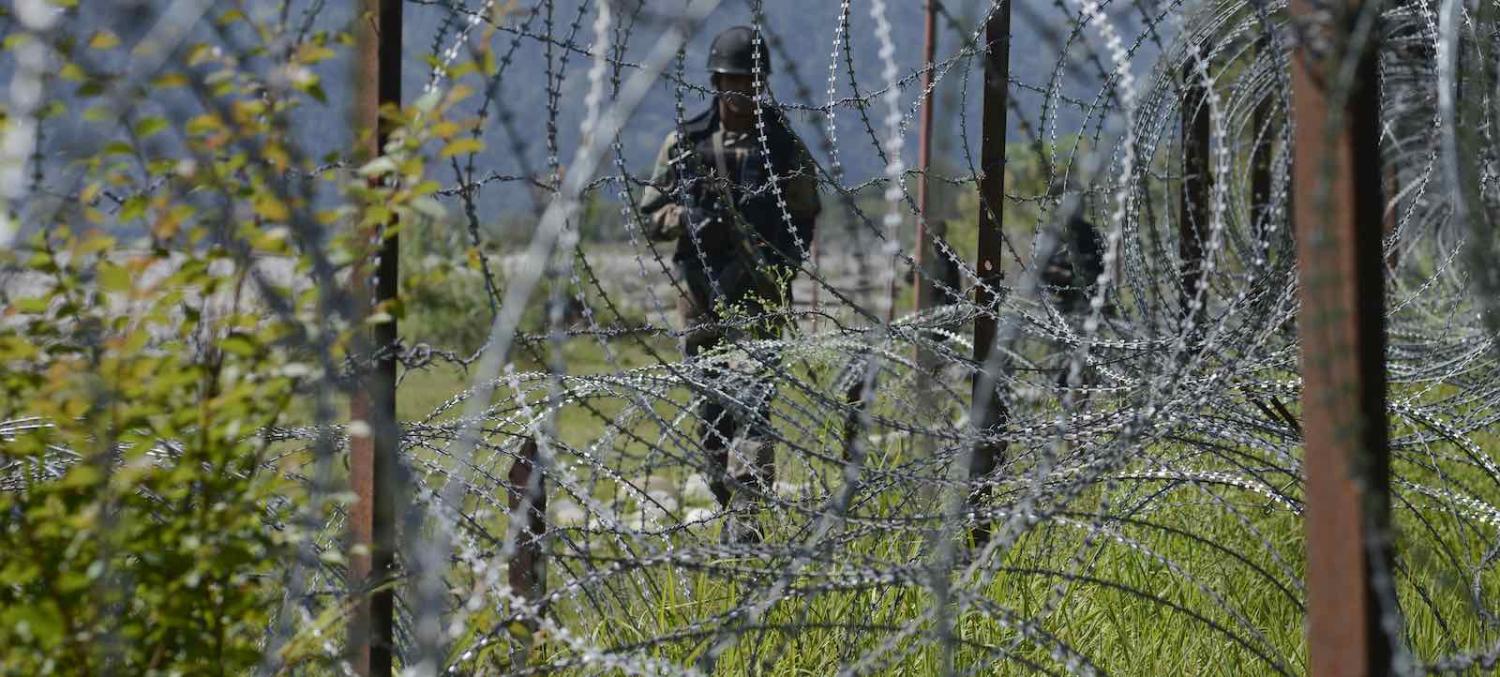Perhaps the biggest casualty of the current state of India–Pakistan relations has been Kashmir, where issues regarding territory, autonomy, and cross-border confrontations have been a long-standing flashpoint between the two countries.
Recent times have seen total disregard for the 2003 ceasefire at points known as the Line of Control, which seperates the militaries of the two nations, and at the International Border, the mutally recognised boundary.
So it appered a welcome sign when on 30 May, in communications between the director generals of military operations of India and Pakistan, it was decided that both have:
agreed to fully implement the ceasefire understanding of 2003 in letter and spirit forthwith and to ensure that henceforth the ceasefire would not be violated by both sides.
The ceasefire encompasses cessation of hostilities both on the Line of Control and the International Border, providing much-needed relief to the armed forces and civilian populations living along the boundary.
However, this is not the first time the two neighbours have agreed to honour the ceasefire, leaving questions about the sustainability of this initiative and its long-term impact on improving India–Pakistan relations. The ceasefire on the border comes in the background of the Ramadan ceasefire announced by the Indian government on 16 May. A conditional ceasefire, it has implications for civilian lives particularly in the Kashmir valley.
The latest ceasefire has implications for domestic politics as well as bilateral dynamics between India and Pakistan. Several attempts at initiating and sustaining a dialogue between the two countries have been unsuccessful since the 2008 Mumbai attacks, and particularly since the Narendra Modi government assumed power in 2014.
Further, the Indian Government’s policies have been tested domestically by a renewal of militant attacks and civilian unrest in the state of Jammu and Kashmir, prompting the military offensive Operation All Out in 2017. Both ceasefire violations and military operations have led to civilian casualties and significant loss of life and livelihood in the state.
The effects of the ceasefire along the border can also be seen in a subtle change in general India–Pakistan relations over the past few months. The first such sign of change was the meeting of national security advisers Ajit Doval (India) and Nasir Janjua (Pakistan) on 26 December in Bangkok. Then, on 29 March, the two Indus Water Commissioners met in New Delhi, followed by a declaration on 31 March that India and Pakistan have agreed to resolve issues about the treatment of its diplomats.
In another welcome change, the Neemrana dialogue, a Track II process supported by the two governments, was restarted in April after a gap of two years. And only two days before the ceasefire was announced, India and Pakistan conducted a maritime dialogue, agreeing to improve the exchange of information regarding apprehension of fishermen on both sides of the border.
While these positive developments provide hope, it is a familiar path for India–Pakistan relations constrained by a historical pattern of dialogue-disruption-dialogue. The two sides continue to be severely critical of one another at international forums, and a discussion on crucial issues of contention at a formal level is yet to yield results.
The ceasefire and its implementation itself is problematic, with violations already reported in addition to some questionable short-term motivations on both sides.
For India, the failure of Operation All Out to resolve the problem in Kashmir and the deterioration of conditions for civilian populations is a major concern. There are reports that local support for ceasefire violations has lessened, particularly in the Jammu region, which is the most affected by cross-border firing. As a crucial political constituency for the ruling Bharatiya Janata Party, this might be a reason for the recent thaw in hard-line postures.
For Pakistan, too, the high human cost of cross-border firing and upcoming elections, as well as the need for a calm border, are key motivations. There also appears to be a change in attitude in the military leadership in Rawalpindi, reflected in what is called the Bajwa doctrine which reasserted the army’s position in Pakistan while stating a desire for stability and dialogue with India.
Violations of the ceasefire agreement are a significant trigger for military, political, and diplomatic tensions between the two neighbours. Yet ceasefire violations also reflect and echo the current status of the relationship, and are thus intensified in an environment of conflict.
Between this political and military strategising, civilian lives are affected immeasurably, with impacts on health, homes, education, and overall daily life. That is why it is essential that this ceasefire holds, irrespective of a few stray incidents of firing.
To achieve a long-term impact, however, sustained political dialogue between India and Pakistan bilaterally, and a meaningful dialogue with the people of Jammu and Kashmir, is imperative for the Indian Government. Only then can the benefits of the ceasefire emerge, providing further preconditions for peace on the borders.

